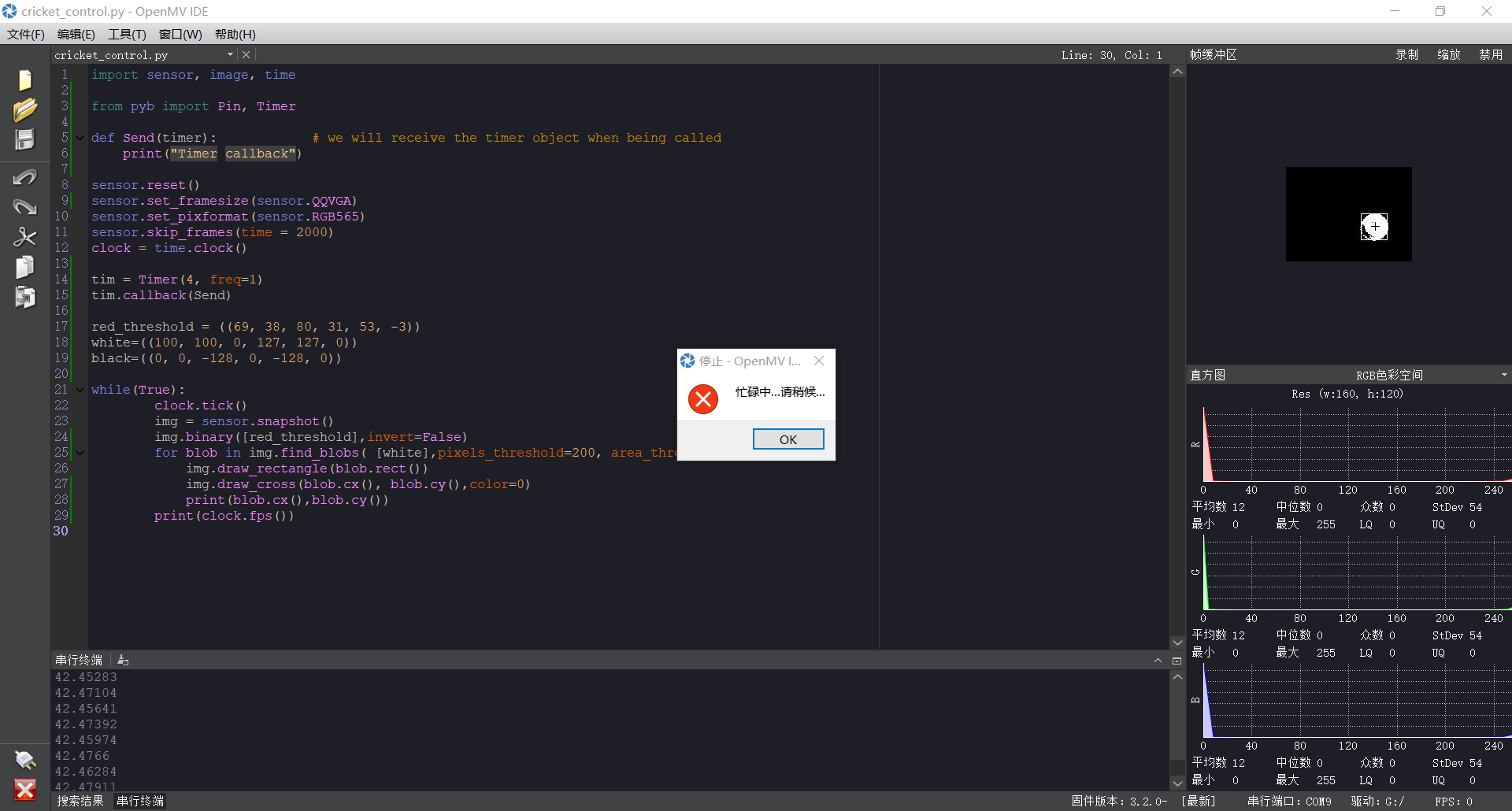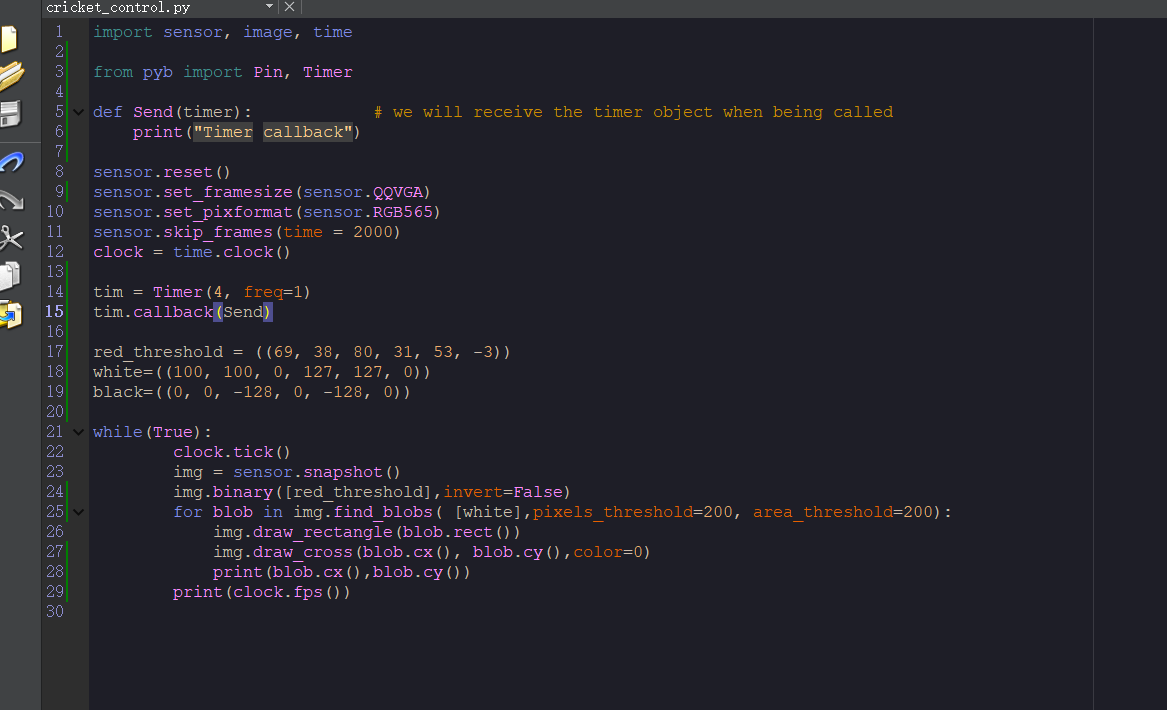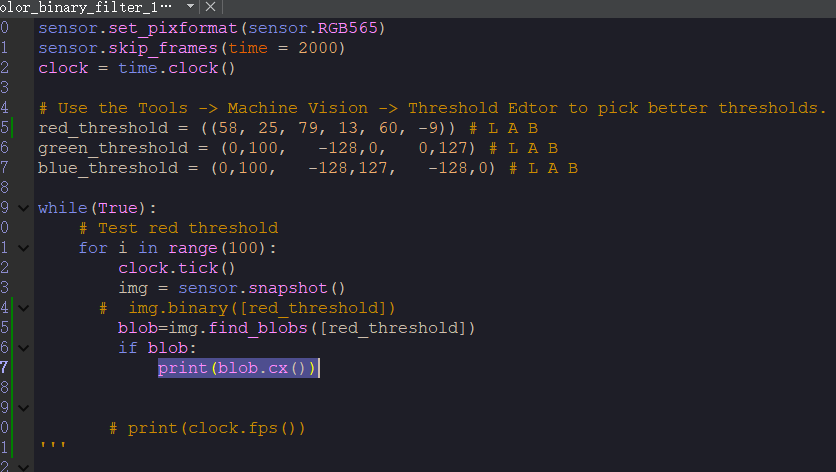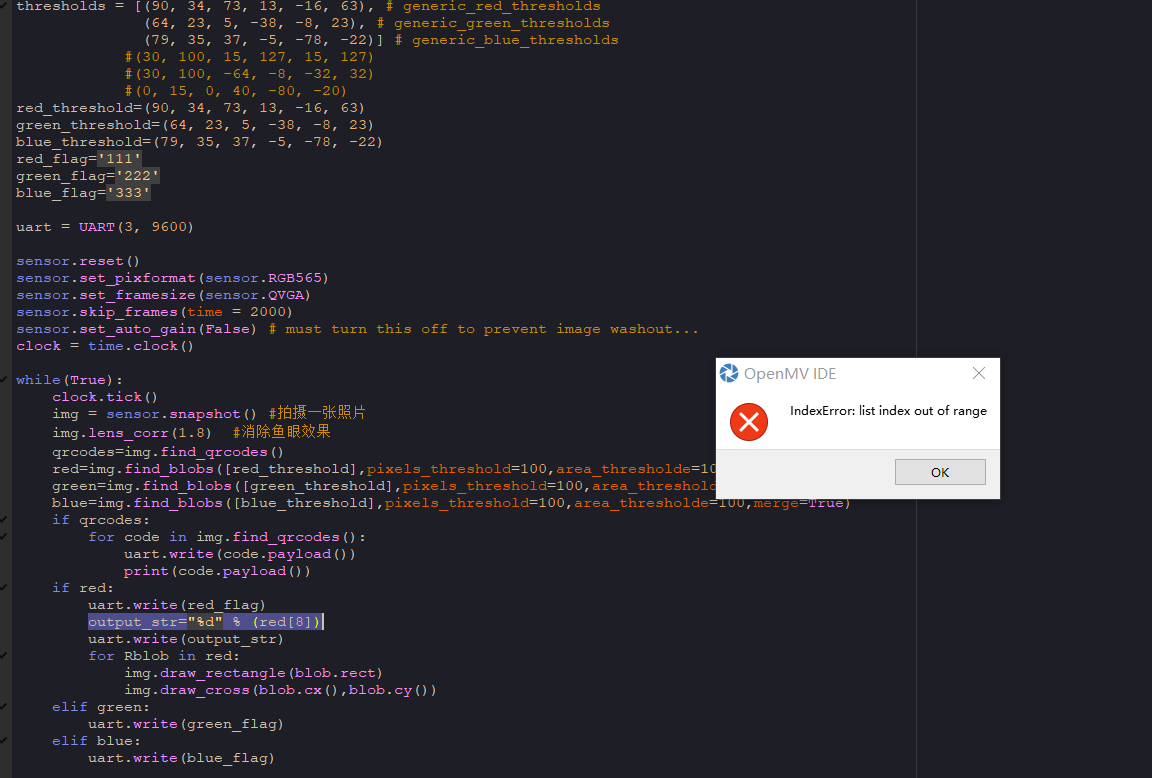import pyb
VL51L1X_DEFAULT_CONFIGURATION = bytes([
0x00,
0x00,
0x00,
0x01,
0x02,
0x00,
0x02,
0x08,
0x00,
0x08,
0x10,
0x01,
0x01,
0x00,
0x00,
0x00,
0x00,
0xff,
0x00,
0x0F,
0x00,
0x00,
0x00,
0x00,
0x00,
0x20,
0x0b,
0x00,
0x00,
0x02,
0x0a,
0x21,
0x00,
0x00,
0x05,
0x00,
0x00,
0x00,
0x00,
0xc8,
0x00,
0x00,
0x38,
0xff,
0x01,
0x00,
0x08,
0x00,
0x00,
0x01,
0xdb,
0x0f,
0x01,
0xf1,
0x0d,
0x01,
0x68,
0x00,
0x80,
0x08,
0xb8,
0x00,
0x00,
0x00,
0x00,
0x0f,
0x89,
0x00,
0x00,
0x00,
0x00,
0x00,
0x00,
0x00,
0x01,
0x0f,
0x0d,
0x0e,
0x0e,
0x00,
0x00,
0x02,
0xc7,
0xff,
0x9B,
0x00,
0x00,
0x00,
0x01,
0x01,
0x40
])
class VL53L1X:
def init(self,i2c, address=0x29):
self.i2c = i2c
self.address = address
self.reset()
pyb.delay(1)
if self.read_model_id() != 0xEACC:
raise RuntimeError('Failed to find expected ID register values. Check wiring!')
self.i2c.writeto_mem(self.address, 0x2D, VL51L1X_DEFAULT_CONFIGURATION, addrsize=16)
self.writeReg16Bit(0x001E, self.readReg16Bit(0x0022) * 4)
pyb.delay(200)
def writeReg(self, reg, value):
return self.i2c.writeto_mem(self.address, reg, bytes([value]), addrsize=16)
def writeReg16Bit(self, reg, value):
return self.i2c.writeto_mem(self.address, reg, bytes([(value >>  & 0xFF, value & 0xFF]), addrsize=16)
& 0xFF, value & 0xFF]), addrsize=16)
def readReg(self, reg):
return self.i2c.readfrom_mem(self.address, reg, 1, addrsize=16)[0]
def readReg16Bit(self, reg):
data = self.i2c.readfrom_mem(self.address, reg, 2, addrsize=16)
return (data[0]<<8) + data[1]
def read_model_id(self):
return self.readReg16Bit(0x010F)
def reset(self):
self.writeReg(0x0000, 0x00)
pyb.delay(100)
self.writeReg(0x0000, 0x01)
def read(self):
data = self.i2c.readfrom_mem(self.address, 0x0089, 17, addrsize=16)
range_status = data[0]
stream_count = data[2]
dss_actual_effective_spads_sd0 = (data[3]<<8) + data[4]
ambient_count_rate_mcps_sd0 = (data[7]<<8) + data[8]
final_crosstalk_corrected_range_mm_sd0 = (data[13]<<8) + data[14]
peak_signal_count_rate_crosstalk_corrected_mcps_sd0 = (data[15]<<8) + data[16]
return final_crosstalk_corrected_range_mm_sd0
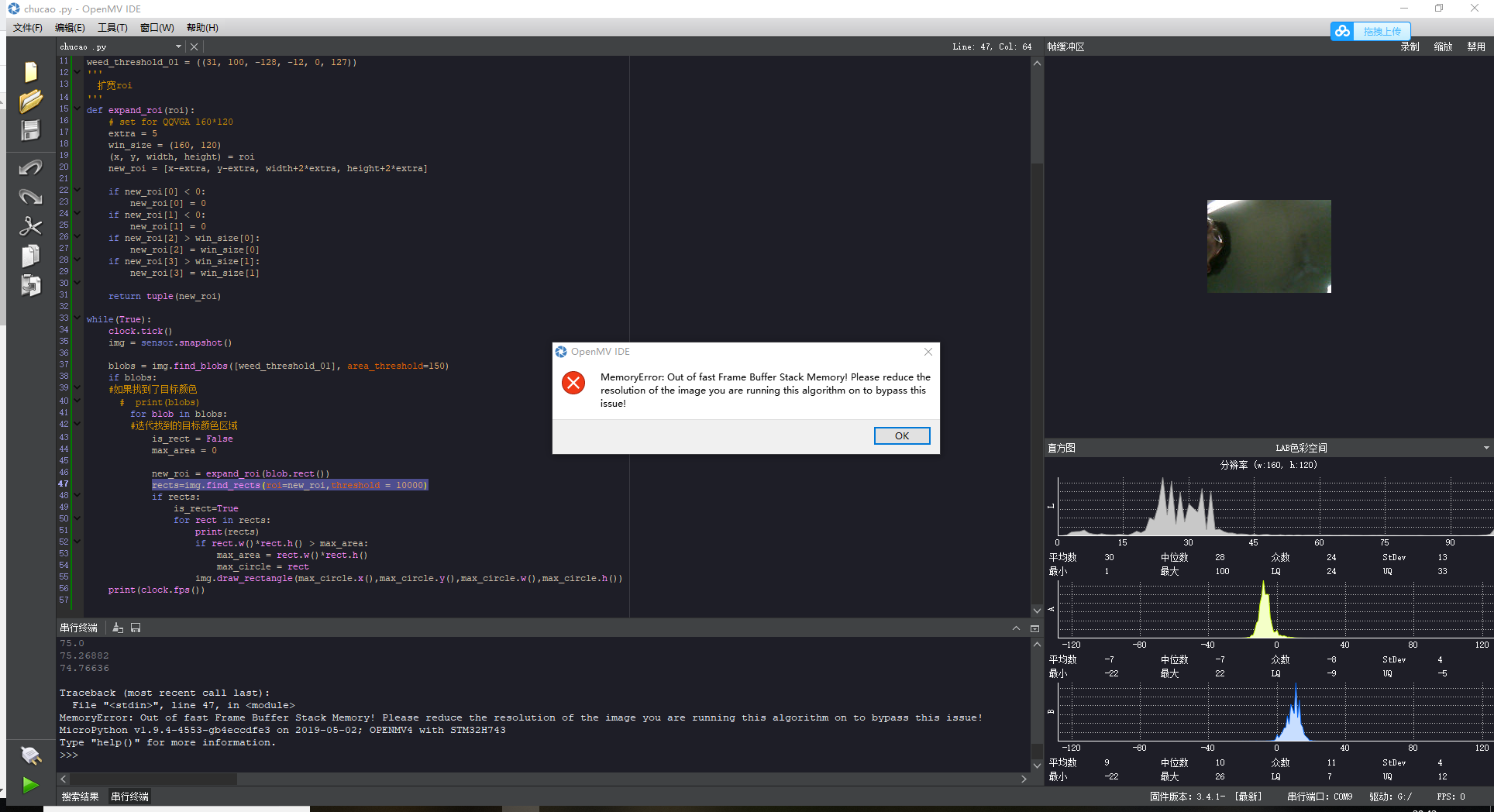
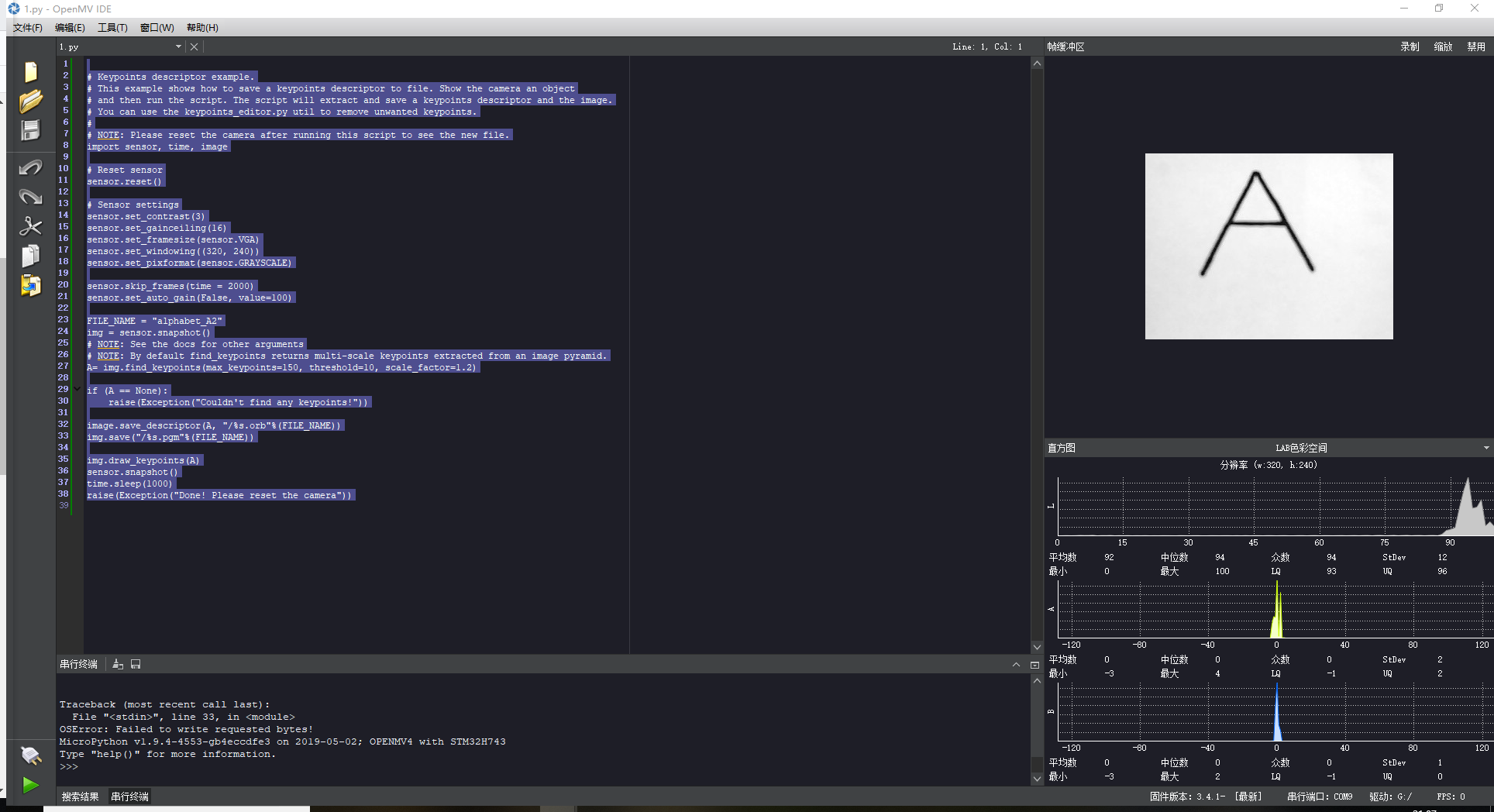
 & 0xFF, value & 0xFF]), addrsize=16)
& 0xFF, value & 0xFF]), addrsize=16)